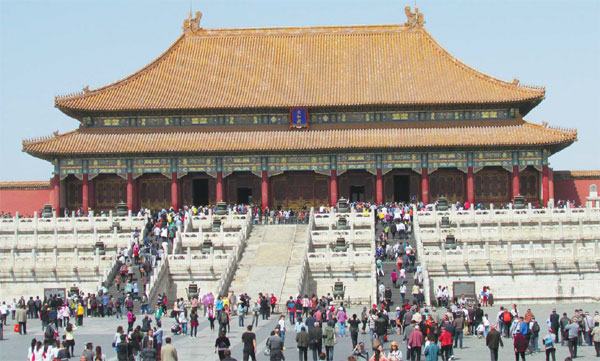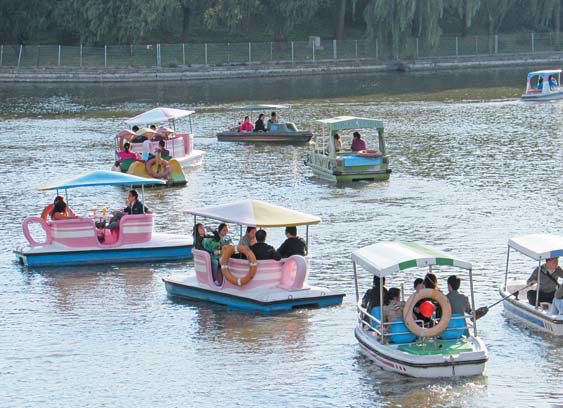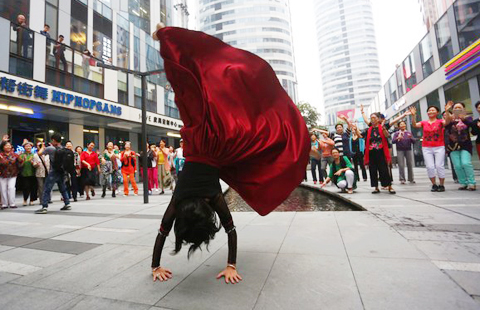A time to celebrate and take in sights
Updated: 2014-10-10 07:51
By Philip Etyang(China Daily Europe)
|
|||||||||||
Golden Week tourist numbers mark the 65th anniversary of the formation of New China
Friends, families and couples thronged Beijing's main attractions earlier this month to celebrate Chinese National Day - which means at least three days off for many people in China starting October 1, and for the lucky ones, seven days.
National Day commemorates the formation of the People's Republic of China, 65 years ago.
|
Hundreds of tourists thronged the inner court of the Forbidden City during the National Day. Philip Etyang / For China Daily |
Running over the weekend, it has also now become known as 'Golden Week'.
Celebrations started with the raising of the national flag on Tian'anmen Square in the capital, an elaborate procedure by a troop of immaculately dressed soldiers, followed by a magnificent display of fireworks across the Beijing skyline.
Normally so busy and crammed with vehicles and people, Beijing's streets were eerily quiet at times during the week, as many people took advantage of the long break to travel home, or just away from the city.
Those who remained chose to visit the city's best sites - and the latest figures showed massive attendances.
More than 120,000, for instance, visited Tian'anmen Square and 70,000 packed into the Forbidden City on Oct 1 alone, according to the China National Tourism Administration.
Beijing's 180 tourist attractions received 1.8 million visitors on Oct 6 alone, a year-on-year increase of 12 percent.
It also reported that the country's top 124 tourist sites attracted 3.6 million visitors on Oct 6, an 11 percent year-on-year rise. In the first six days of the holiday, 29.3 million visited the sites, spending 1.5 billion yuan ($820 million) on tickets.
I joined many others in Chaoyang Park, the Olympic Park, and the Forbidden City - three of the city's most popular sites.
Located at the site of the former Prince's Palace in Chaoyang District, Chaoyang Park was abuzz with activity with its train rides, several roller coasters and water slides packed to capacity, with long queues of people waiting for their turn.
Often touted as China's very own Central Park, the largest park in China also offers visitors a Sony Science Museum, an artificial beach volleyball ground, and a water cube.
It was a similar story across the capital in the Olympic Park, site of the 2008 Beijing Summer Olympics.
The area is dominated, of course, by the famous National Stadium, colloquially referred to as the Bird's Nest, which next August welcomes the 15th World Athletics Championships - the largest event to be held in the city since the Olympics.
Although the majority of the merry makers were children and their parents, what struck me most, however, were the older Beijingers in the crowds.
I saw many, exercising, walking briskly, stretching, picking up children - maybe they were given extra energy by the company of their grandchildren, but it certainly seemed to me that the average older person in this city keeps pretty fit and healthy.
At arguably Beijing's most recognizable attraction, the Forbidden City, things were no different.
The over 8,000 buildings that dot the UNESCO-listed site were packed, the flow of people hampered sometimes by many taking group photos as well as selfies.
Tour guides were enjoying booming numbers as they led their groups around, explaining the history of the various wooden structures, relics and stone carvings on display.
Children with their faces painted and waving handheld Chinese National flags dotted the scene, reminding everyone of the country's more recent history.
The Forbidden City is divided into two: the outer and inner courts.
The outer court of the 720,000 square feet city carries the bulk of visitors, its many benches and seats providing welcome resting spots.
China's inbound tourism industry last year contributed 4 percent to the country's overall GDP with $18 billion dollars in revenue.
The industry peaks during golden week and the Spring Festival, according to the China Tourism Industry Report 2013-2017.
The China Tourism Academy has just predicted that about 480 million trips will have been made during this year's National Day celebrations, boosting tourism revenue by 20 percent from a year ago to 27 million yuan.
For China Daily
|
Chinese spent time with their families enjoying boat rides at Chaoyang Park in Beijing during the seven days-off. Philip Etyang / For China Daily |
(China Daily European Weekly 10/10/2014 page26)
Today's Top News
On this beach no one is naked
Barrage of deals expected on Europe trip
First US Ebola patient dies
Sino-Portuguese relations make 'giant leap' forward
Holiday spending habits change
Book of Chinese president debuts at Frankfurt fair
China's 'Nightingale' races for Oscar
Britain to deploy 750 servicemen in West Africa to tackle Ebola
Hot Topics
Lunar probe , China growth forecasts, Emission rules get tougher, China seen through 'colored lens', International board,
Editor's Picks

|
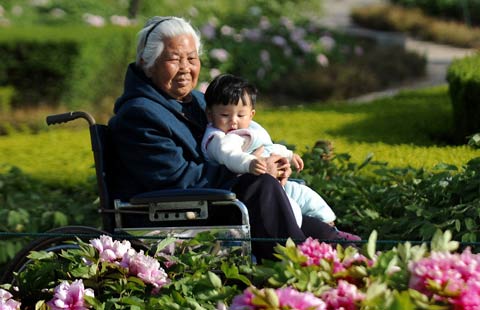
|
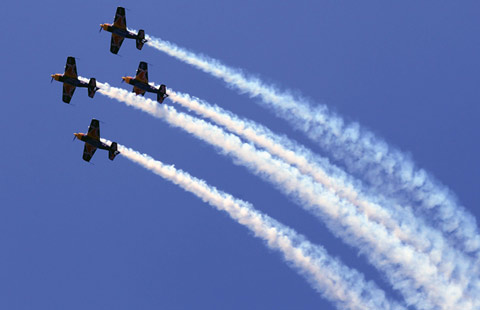
|
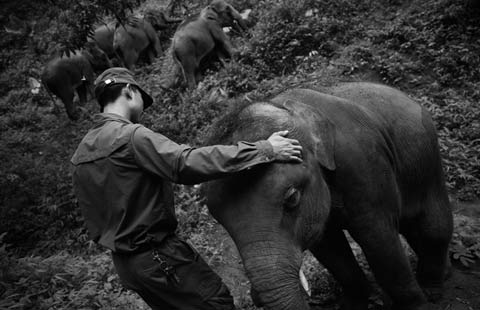
|

|
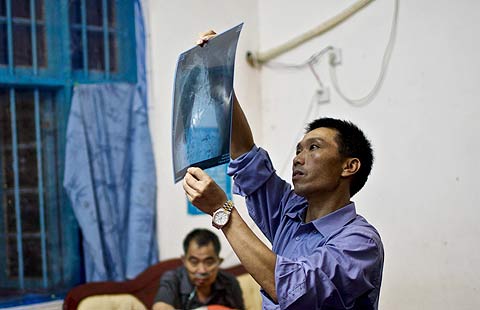
|
